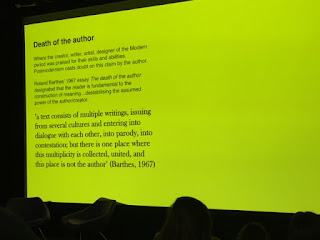Visual literacy
Ability to construct meaning from images and type; interpreting images from present past and range of cultures and produce images that effectively communicate a message to an audience
Mcluhan*
-chronologicaldecelolment (democratisation)
Landscape of digital culture where technology itself develops its own social context
Visual literacy is images that can be read
Conventions of visual communication are a combination of universally and cultural symbols (universal languages/symbols)
Vc is made of presentation symbols whose meaning results from their existence in particular context
Narrowing meanings of symbols by putting it into context as some other shambles have other meanings that can mean something when on its own
We all have inbuilt ways of interpreting things as it's so engraved in us and some of them being right and wrong that we unconsciously interpret things
We can think of them positivelyor negstivley as the dumbos have their own connotations and also depending on your Point of view and experiences
When we see a symbols we bring into that symbol what we know and experience whether they are actual or taught
There's an agreement and format in which symbols are perceived and we all agree about it
We use colour and shape in order to make and create symbols that can be learnt
You cna manipulate symbols in order to relate it to the context you are trying to get
You apply your knowledge into the the symbol
The Beatles - identifying certain people through details from knowledge and heritage or sign symbols inferences and information that we have all seen and gathered
Semiotics- visualnsyntax and visual semantics( recognising the visual and cultural)
Syntax if an image refers to a OK tuiral structure and visual organisation of elements it represents the basic building block of an image that affect the way we read it (affecting the way someone reads what we are doing through e.g. Drama gets format scale colour font stroke weight shape composition layout motion light rhythm space depth texture text words tone shade line e.g.
Pulling experience and knowledge and context, using layout etc
Visual semantics - image refers way an kmage fits into a cultural process of communication it includes the relationship between Form and meaning and the way meaning is communicated (learnt symbols)
There are Symbols that have the same meaning but can be dif to different people due to age culture etc
Semiotics- sign, symbol and signifier
Study of sights and sign processes (semiosis) indication designation etc
Visual synecdoche - part is used to represent the whole or vice versa however it only works if we recognise it
Main subject is simply substituted to the main one
Visual metonym- symbolic image that is used to make reference to something with a more literal meaning ; association the viewer makes a connection between the image and intense subject due to films books tv shows etc
Visual metaphor- transfer the meaning from one jmage to another ; although images may have nocose relationship a metaphor conveys an impression avoutbsomething relatively unfamiliar comparing or associating it worth something familiar
"Work the metaphor"
-we have to get better at and review how we work a meaning of one im thing to another; the layout framing, context etc
-take meaning and symbols and the way we organise it through semiotics and communicate it
-people need to know the basic kwldge of symbols in order for them To understand it
-we control imagery (visual lie) in order to manipulate how people interpret it
























